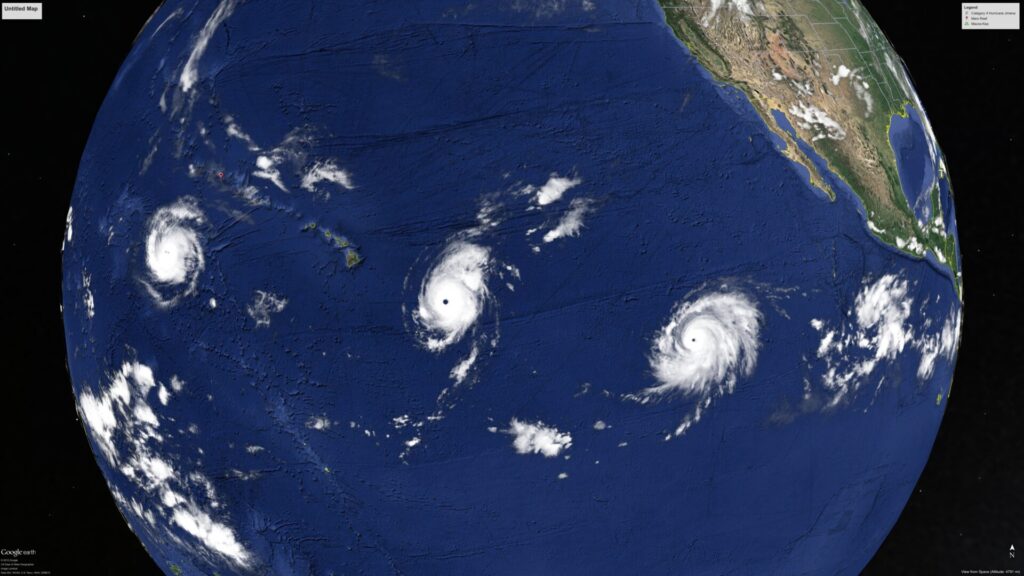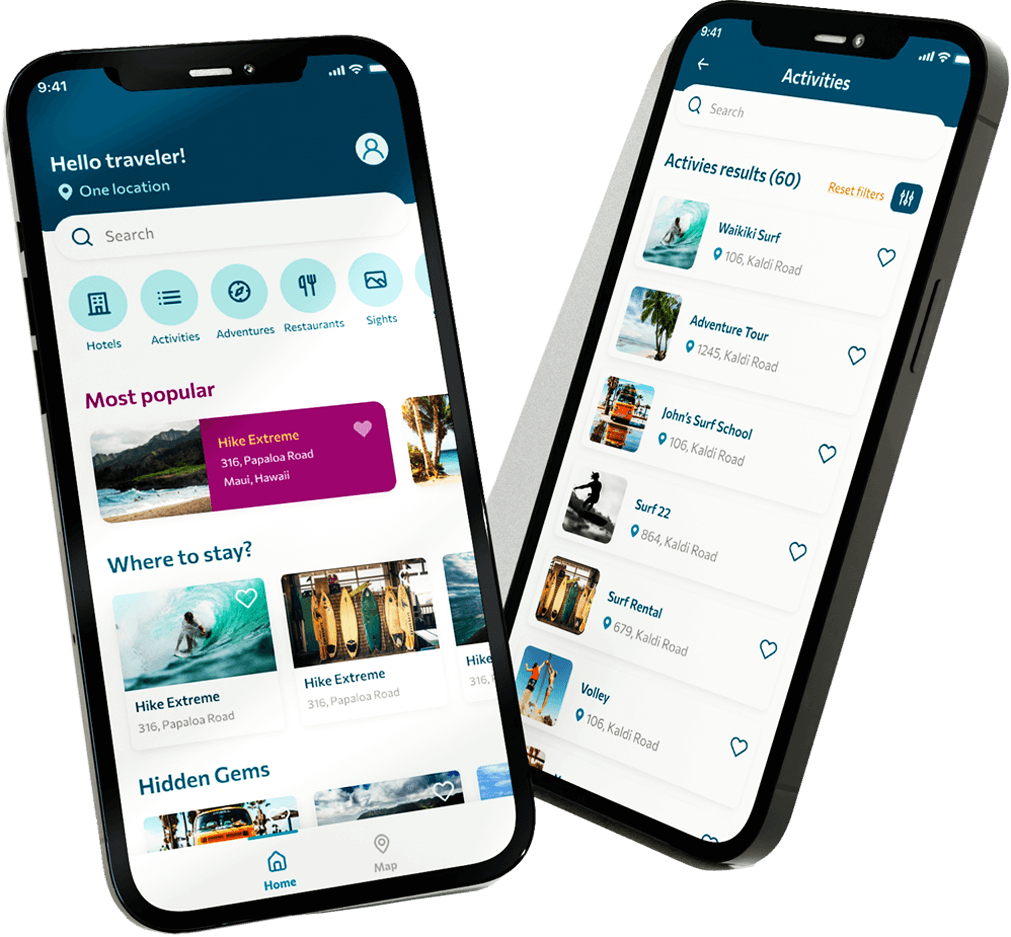Despite having a seemingly endless summer, Hawaii does experience seasons. It’s not just those associated with the visitor industry, such as Holiday Season or Spring Break. The season those who live in Hawaii think of is more unpredictable—Hurricane Season. Being in the tropics means that the namesake tropical storms are something that makes a regular appearance. Sometimes those tropical storms strengthen into hurricanes. And only occasionally do those hurricanes actually hit the Hawaiian Islands. However, these storms are so big that even indirect effects can have an impact. Here’s some history on hurricanes in Hawaii and what you can do to prepare if one is heading toward the Aloha State when you’re visiting.
Hurricanes in Hawai‘i
Hurricanes are few and far between here. The last hurricane that slammed the islands was Hurricane ‘Iniki in 1992. The only previous hurricanes to hit the state in the 20th century were ‘Iwa in 1982 and Dot in 1959. (We had a couple mild encounters this century but they were very minor.) When Isabella Bird traveled here in 1873, where she penned her excellent book, Six Months in the Sandwich Isles, she reported that “hurricanes are unknown in the islands,” which means that there hadn’t been one in living memory.
It’s not just good luck. Hawai‘i has two things that provide some protection against hurricanes. Look at the photo below from 2015.

Pretty scary with the Hawaiian Islands located between two of those storms. But you didn’t hear about Hawai‘i getting slammed because we didn’t. Two of the things hurricanes need most are warm waters and height. When a storm makes a beeline straight toward the islands from the beginning is when we worry the least. As it leaves the warmer southern waters our relatively cooler waters usually act to weaken the storm.
And then there’s the height issue. Most flights to Hawai‘i take longer than the return flight. Every wonder why? You would think that our trade winds from east to west would make the planes fly faster. But airlines fly above 30,000 feet and those winds are usually from the west and strong. This wind shear has the affect of chopping the top off storms, weakening them.
So storms usually stay strong when they stay south of us and our usual high pressure system parked to the northeast of us usually repels the storms. (When ‘Iniki hit in 1992, the protective high pressure system moved away at the worst possible time and the storm, which had been to the south and strong took a right turn and flattened Kaua‘i.)
Indirect effects from hurricanes are where we do get some issues. Since they happen in the summer and fall, our dry season, we end up with other potential problems. The massive amounts of rain dropped by the storms mean flash floods as well as land and mud slides become a factor. Formerly dry gulches filled with dead and drying out vegetation can suddenly funnel massive amounts of water, mud and debris downhill causing lots damage and closing roads. Still fresh on everyone’s mind is the potential for wildfire as well. Those same dry conditions and strong winds make for a dangerous combination, resulting in events such as the disastrous fires on Maui in 2023.
How to Prepare for a Hurricane in Hawaii
The beauty of being on vacation is that a few preparations are likely already taken care of for you, but you can start by learning how your hotel is prepping for the storm. Check if they’re got a plan for food and water, and how long their backup generator will run for (and what will be turned off when backup power kicks in).
After you know what the hotel is doing to prepare for the storm, check out this hurricane preparedness checklist from ready.gov to be sure you have everything else ready. You may also find Red Cross’s Disaster Preparedness website useful. (They have a few downloadable brochures on emergency preparations here.)
For visitors renting out vacation homes you’ll have a little more work to do since there’s no concierge to answer questions. If you’ve got the property owner’s information, now may be the time to see what they want you to do for the property. Additionally, stocking up on food, water, and necessary medication is advisable.
Regardless of what your arrangements are, familiarizing yourself with disaster preparedness plans is never a bad idea. The Hawaii Emergency Management Agency covers the basics of what to do in the event of many natural emergencies, including hurricanes. You may also want to look for emergency hurricane shelter locations in your area.
At Revealed Travel Guides we are always on the lookout for weather and changing conditions. We post daily surf reports for each island in Hawai‘i and make updates in real time on closures. We have sections on current storms and volcanic eruptions in smartphone app that only go live when they happen, with important links and updates. We’re here to give you the kind of advice that only those that live in the area and know the conditions can give. We do the research so you can focus on your trip. Our believable guides will help bring you unbelievable vacations.




0 Comments